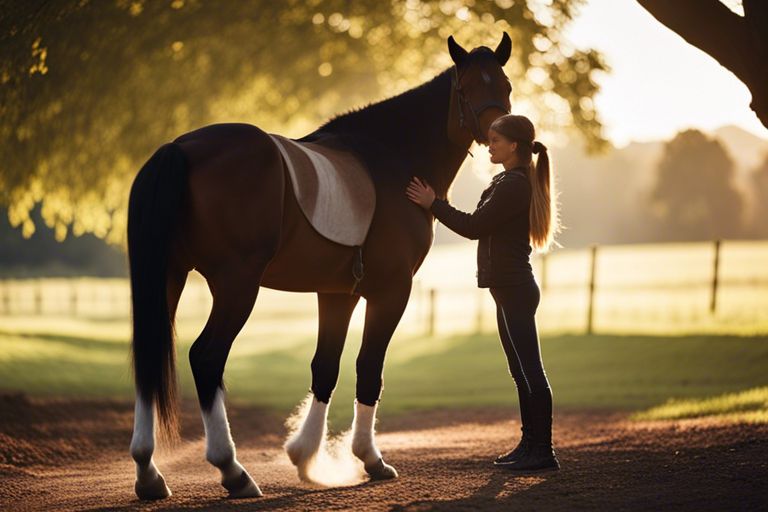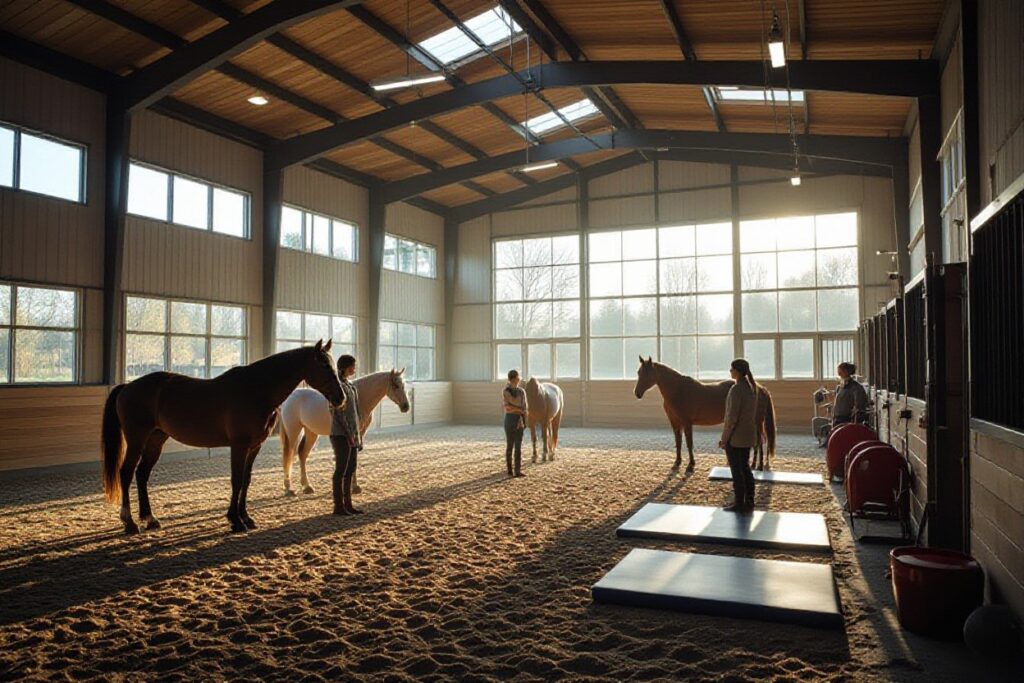Most equestrians know the importance of a well-rounded horse riding exercise plan to improve skills, bond with your horse, and stay fit. Crafting a tailored routine not only benefits your riding performance but also enhances your horse’s well-being. In this guide, you will learn how to customize an exercise plan that suits both you and your equine partner, ensuring a safe and effective workout regimen.
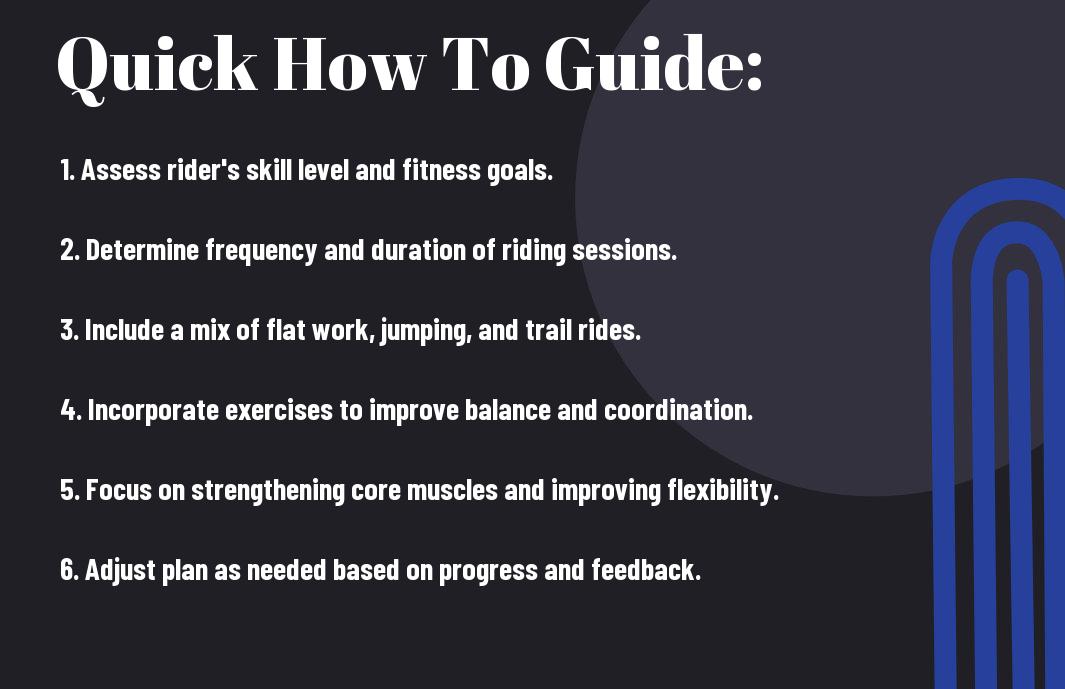
Understanding Your Horse’s Needs
Identifying Your Horse’s Fitness Level
For horses, understanding their fitness level is crucial before developing an exercise plan. Assess your horse’s current condition by observing its weight, muscle tone, and overall stamina. A horse that is out of shape will need a gradual introduction to exercise to prevent injuries.
Determining Your Horse’s Breed and Age-Related Limitations
Understanding your horse’s breed and age-related limitations is vital in planning a safe and effective exercise routine. Different horse breeds have varying stamina levels, muscle structures, and susceptibilities to certain health issues. **The age of your horse also plays a significant role in determining the intensity and type of exercises** that would be suitable.
Level of caution should be exercised when working with older horses or breeds prone to joint issues.**It is vital to tailor the exercise plan to accommodate these limitations to prevent any strains or injuries**.
Considering Your Horse’s Health and Medical Conditions
Identifying any health issues or medical conditions your horse may have is crucial for its well-being during exercise. **Certain medical conditions can impact your horse’s ability to exercise safely**. Regular veterinary check-ups can help you stay informed about your horse’s health status and any restrictions that may need to be considered.
A balanced diet, proper hydration, and adequate rest are vital for maintaining your horse’s overall health and stamina.**Understanding and addressing any medical conditions or health concerns will help you develop a suitable exercise plan that supports your horse’s well-being**.
Setting Goals for Your Exercise Plan
Defining Short-Term and Long-Term Objectives
You may be eager to start your horse riding exercise plan, but before you jump in, take some time to define both short-term and long-term objectives. If you are new to horse riding, your short-term goal could be to improve your balance and coordination in the saddle, while a long-term goal might involve participating in a local horse show or trail ride.
By setting clear objectives, you can track your progress and stay motivated throughout your training. Additionally, breaking down your goals into smaller milestones can help you celebrate achievements along the way.
Tips for Setting Realistic and Achievable Goals
Defining realistic and achievable goals is crucial when developing your horse riding exercise plan. It is imperative to challenge yourself but also be practical about what you can accomplish within a certain timeframe. Recognizing your current skill level and assessing your horse’s abilities can guide you in setting goals that are within reach.
- Set specific goals: Instead of aiming to “ride better,” consider setting objectives like improving your sitting trot or mastering a particular jumping course.
- Track your progress: Keep a training journal to monitor your advancements and identify areas for improvement.
- Consult with a trainer: Seeking guidance from a professional can help tailor your goals to your skill level and your horse’s training needs.
Factors to Consider When Setting Goals for Competition or Trail Riding
Some factors to consider when setting goals for competition or trail riding include the type of event, your horse’s experience level, and your own riding aspirations. Knowing the demands of the competition or trail ride can help you prepare effectively and set appropriate goals.
- Location and terrain: Understanding the venue and trail conditions can influence your training focus and goal-setting process.
- Competition level: Tailoring your goals based on the competition’s difficulty level can help you progress steadily and build confidence. Knowing your competition can give you a competitive edge and prepare you for the challenges ahead.
Choosing the Right Exercises
Unlike other forms of exercise, horse riding requires a carefully curated exercise plan that incorporates a variety of movements to keep both you and your horse in top condition. When choosing the right exercises, it’s crucial to consider the types of exercises that will benefit your horse the most.
Types of Exercises: Warm-Up, Strength, Endurance, and Flexibility
Strength: A crucial component of your exercise plan should focus on building strength in your horse’s muscles to support balance and coordination. Different exercises targeting specific muscle groups can help improve overall performance.
In a well-rounded exercise plan, you should also include warm-up exercises to prepare your horse’s body for more intense workouts, endurance exercises to improve stamina, and flexibility exercises to enhance range of motion. Perceiving how each type of exercise contributes to your horse’s overall well-being will help you design an effective routine.
| Warm-Up | Get your horse’s body ready for exercise |
| Strength | Build muscle for balance and coordination |
| Endurance | Improve stamina for long rides |
| Flexibility | Enhance range of motion |
| Balance | Strengthen core muscles for stability |
Tips for Selecting Exercises Suitable for Your Horse’s Level and Breed
One crucial aspect to consider when selecting exercises for your horse is understanding their level of training and their specific breed characteristics. Different breeds excel in various disciplines, so tailoring your exercise plan to suit your horse’s individual needs is crucial. Knowing how to adjust the intensity and type of exercises based on your horse’s capabilities will prevent injury and ensure steady progress.
- Level: Assess your horse’s current abilities before planning exercises
- Breed: Consider your horse’s breed traits and tailor exercises accordingly
Factors to Consider When Incorporating Jumping, Dressage, or Other Disciplines
Tips.ylabel Clearly, incorporating disciplines like jumping or dressage into your exercise plan requires careful consideration to ensure your horse’s safety and progression. This means evaluating your horse’s skill level, physical condition, and readiness for the specific demands of each discipline.
Any deviation in your horse’s exercise routine should be gradual and monitored closely to prevent injuries or setbacks. This ensures that your horse can adapt to new movements and challenges effectively. This deliberate approach will help you and your horse develop skills and confidence in various disciplines over time.
- Safety: Prioritize your horse’s well-being when introducing new disciplines
- Progression: Gradually increase difficulty to prevent overload
Endurance
When planning exercises for your horse, it’s important to focus on improving their endurance to handle long rides and intense training sessions effectively. Incorporating exercises that gradually increase the duration and intensity of workouts will help build your horse’s stamina over time. Endurance is crucial for maintaining performance and preventing fatigue during rides. Remember to include a balance of exercises that challenge your horse without overexerting them to ensure steady progress.

Creating a Balanced Exercise Plan
How to Structure a Weekly Exercise Routine
Keep in mind that variety is key when creating a well-rounded exercise plan for your horse. It’s imperative to incorporate a mix of flatwork, jumping, trail riding, and other activities to keep your horse engaged and physically fit. Depending on your horse’s fitness level and goals, you can adjust the intensity and duration of each session.
Tips for Incorporating Rest and Recovery Days
You should prioritize rest and recovery days in your horse’s exercise plan to prevent burnout and reduce the risk of injury. It’s recommended to schedule rest days at least once a week to allow your horse’s muscles to recover and regenerate. On these rest days, you can opt for light hand-walking or turnout to keep your horse moving without exerting too much energy.
- Monitor your horse’s energy levels and overall condition to determine the frequency of rest days.
- Incorporate activities like stretching exercises and massage therapy on rest days to promote recovery and relaxation.
Though rest days may seem counterproductive, they are crucial for your horse’s overall well-being and long-term performance.
Factors to Consider When Planning for Inclement Weather or Arena Availability
Rest assured, you can still maintain a consistent exercise routine for your horse even when faced with inclement weather or limited arena availability. It’s important to have a contingency plan in place to ensure your horse continues to receive adequate physical activity and mental stimulation.
- Invest in indoor riding facilities or opt for alternative exercises like groundwork or hill work when outdoor riding is not possible.
- Consider implementing mental enrichment activities such as puzzles or obstacle courses to keep your horse engaged during periods of restricted exercise.
Thou can adapt your horse’s exercise plan to accommodate changing circumstances and maintain consistency in their training regimen.
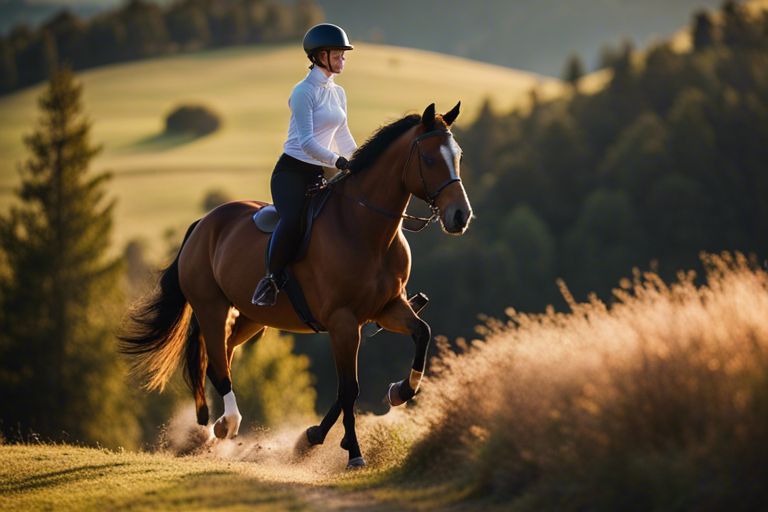
Safety Precautions and Risk Management
Not paying attention to safety precautions while riding can lead to serious accidents or injuries. It is vital to prioritize safety at all times when engaging in horseback riding activities.
Essential Safety Gear and Equipment
Little can protect you from potential hazards while riding than the correct safety gear and equipment. Always wear a properly fitted helmet to protect your head in case of a fall. Additionally, sturdy footwear with a heel and appropriate clothing can help prevent accidents and provide comfort while riding.
Tips for Riding Safely in Different Environments and Conditions
Gear up appropriately for the specific environment and conditions you will be riding in. Ensure your horse is also properly equipped with safety gear such as leg protection and reflective gear for low-light conditions. Ride cautiously and adjust your speed and behavior based on the terrain and weather conditions. After all, visibility and stability are crucial factors for a safe ride.
Factors to Consider When Riding with a Partner or in a Group
This is particularly important for group rides, as coordination and communication are key to everyone’s safety. When riding with others, always establish clear signals and guidelines to communicate effectively. Remember to maintain a safe distance between horses to prevent accidents and allow room for maneuvering in group settings. Thou should also consider the experience level of all riders in the group and adjust the ride to accommodate the least experienced rider.
Safety is paramount when horseback riding, and taking precautions can prevent unwanted incidents. It is crucial to always prioritize safety by wearing the appropriate gear, being aware of your surroundings, and communicating effectively with others to ensure a safe and enjoyable ride. Recall, a safe ride is a fun ride!
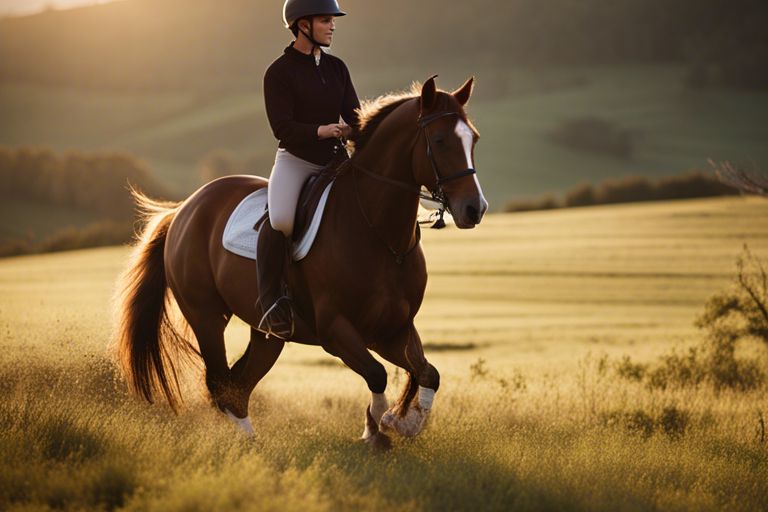
Monitoring Progress and Adjusting the Plan
How to Track Your Horse’s Progress and Performance
All thoroughbred horses tend to progress at different rates, so it’s crucial to track your horse’s development by keeping detailed records of their exercise routine, performance, and overall well-being. Regularly evaluating your horse’s progress can help you identify areas of improvement or concern. You can track metrics such as speed, endurance, flexibility, and behavior to gauge how well your horse is responding to the exercise plan you’ve devised.
Tips for Identifying and Addressing Plateaus or Setbacks
If you notice that your horse’s performance has plateaued or even regressed, it’s necessary to address these issues promptly. Some common signs of plateaus or setbacks include lethargy, reluctance to perform certain exercises, or decreased speed and agility. To address these issues, consider adjusting the intensity or type of exercises, incorporating new challenges, or consulting with a veterinarian or equine specialist for a thorough evaluation.
- Regularly monitor performance metrics.
- Consider adjusting the exercise routine if progress stalls.
- Consult with professionals if needed.
Factors to Consider When Adjusting the Plan for Changes in Your Horse’s Needs
Addressing changes in your horse’s needs is crucial to ensure their continued progress and well-being. Factors such as age, health conditions, seasonal changes, or competition goals can all influence the effectiveness of your exercise plan. By adapting the plan to accommodate these changes, you can maintain your horse’s optimal performance and prevent any potential setbacks.
- Consider your horse’s age and health status.
- Adjust the plan based on seasonal variations.
- Knowing when to modify the routine is key.
Summing up
Conclusively, by following the steps outlined above, you can develop an effective horse riding exercise plan that will help you improve your riding skills, increase your fitness level, and enhance your overall performance. Remember to set specific goals, include a variety of exercises to target different areas of your body and your horse’s training, and stay consistent in your training routine to see progress. By staying dedicated and focused on your plan, you will be on your way to becoming a better rider and forming a stronger bond with your horse.
Q: Why is it important to have a horse riding exercise plan?
A: Having a structured exercise plan for you and your horse helps improve fitness levels, enhance performance, prevent injuries, and maintain overall health and well-being.
Q: How do I create a horse riding exercise plan?
A: Start by setting specific goals, assessing your current fitness level, identifying areas that need improvement, and creating a balanced plan that includes a mix of cardio, strength training, flexibility exercises, and rest days.
Q: What should be included in a horse riding exercise plan?
A: A well-rounded plan should include aerobic exercises for stamina, strength training for muscle development, flexibility exercises for mobility, core exercises for stability, and rest days for recovery.
Q: How often should I exercise my horse?
A: The frequency of exercise depends on various factors such as the horse’s age, fitness level, discipline, and goals. A general guideline is to aim for 3-5 days of exercise per week with a mix of light, moderate, and intense workouts.
Q: What are some common mistakes to avoid when developing a horse riding exercise plan?
A: Some common mistakes include skipping warm-ups and cool-downs, overtraining, neglecting rest days, not adapting the plan based on progress, ignoring proper nutrition and hydration, and not listening to your horse’s feedback and adjusting the plan accordingly.
